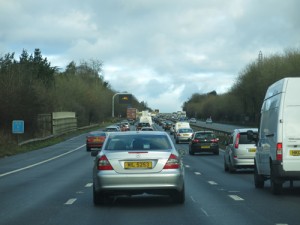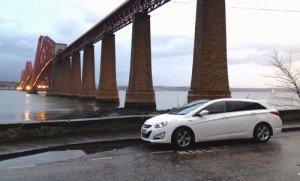Manufacturing decline not always as analysed
I have just finished reading a book on the manufacturing decline that has occurred over the last 60-odd years in the UK. It’s called The Slow Death of British Industry and is subtitled A Sixty Year Suicide 1952 – 2012. It covers, decade by decade and industry by industry, the decay in making things in what was once a great manufacturing country.
The industries it covers include car manufacture, ship building, aircraft design and construction – and also more obscure industries like pharmaceuticals. It describes the companies that fell by the wayside, were absorbed by others, or ended up being split into so many entities that their whole reason for existence simply disappeared…
Companies like Dorman Long (builder of the Sydney Harbour Bridge), Parsons (the inventers of the steam turbine) – and car brands like Wolseley, Triumph and Jowett.
The book catalogues in excruciating detail the union bloody-mindedness, the inept management, the worthless interventions of government, the confusion in direction and execution.
And visiting Britain’s wonderful technological museums (as I have done) where you can see Concorde; the SR.N4 hovercraft; the remains of one of the crashed Comets; the beautiful Jaguar E-type; the fastest steam locomotive in the world (the Mallard); the world’s first code-breaking electronic computers; the Sinclair electronic calculator – it makes this whole story of UK manufacturing success and decline come alive.
But there are some things missing in the analysis. They’re the same things missing in many analyses that occur here in Australia of our similar (but smaller scale) decline in domestic manufacturing.
Firstly, quoting massive reductions in the share of employment that manufacturing comprises in the economy is to miss the point that such changes have occurred in all first world countries. For example, that’s the even the case in countries like Germany and France that are often cited as manufacturing powerhouses we should be emulating.
In much the same way as primary industry (farming and mining) once dominated employment, these days, tertiary (service-based) industries now create most employment. That decline in the share of employment held in manufacturing jobs is exactly what you’d expect with greater mechanisation, use of robotics and so on. We wouldn’t want to be hand-building all our cars, one at a time, as was once done. Productivity would be terrible and cars would be unaffordable. So, of course machines will replace people, manufacturing productivity will improve and employment in the sector will decrease as a proportion of total employment.
Secondly, ignored is that the decline in local manufacturing is based entirely on a reduction in demand for those goods. If the pubic, the buyers, choose not to buy locally made goods – and instead buy imports – then of course (unless they are competitive in exports), local manufacture will decline.
In other words, to be brutal about it, uncompetitive domestic companies go broke. They may be uncompetitive in technology, in branding, in price, in innovation – in all cases, consumers vote with their wallets.
So we hold a major collective responsibility for manufacturing in our country declining. The person who blames the Federal Government of Australia for the loss of car manufacturing in this country – that is, the loss of Toyota, Ford and Holden – often has a Nissan Patrol in their driveway, or a Honda, or a BMW. The person who complains that the last Australian-built washing machine recently came off the production line is the same person who has never bought an Australian-made washing machine.
Thirdly, and as an extension of this idea, globalisation, free trade agreements and geographical shrinking of the world through information technology has increased the flexibility with which consumers can make choices. I source electronic modules on eBay from China; they’re bought from either the manufacturer or wholesaler of these products. I can remember when some such modules, able to be sourced only from local retailers, cost me over ten times as much and would take a month to be delivered.
I can very much empathise on a technological history level with the loss of once great companies, once great manufacturing enterprises.
But that’s a completely different perspective from saying that we should all have paid more for inferior goods– and so on a societal level have had a lower standard of living – to prop up manufacturing companies that had become uncompetitive.
I think that in the future, commentaries on the decline of manufacturing will appear to be as relevant as those that bemoan the fact that most people no longer till farms for a living.

 Julian Edgar, 50, has been writing about car modification and automotive technology for nearly 25 years. He has owned cars with two, three, four, five, six and eight cylinders; single turbo, twin turbo, supercharged, diesel and hybrid electric drivelines. He lists his transport interests as turbocharging, aerodynamics, suspension design and human-powered vehicles.
Julian Edgar, 50, has been writing about car modification and automotive technology for nearly 25 years. He has owned cars with two, three, four, five, six and eight cylinders; single turbo, twin turbo, supercharged, diesel and hybrid electric drivelines. He lists his transport interests as turbocharging, aerodynamics, suspension design and human-powered vehicles.




